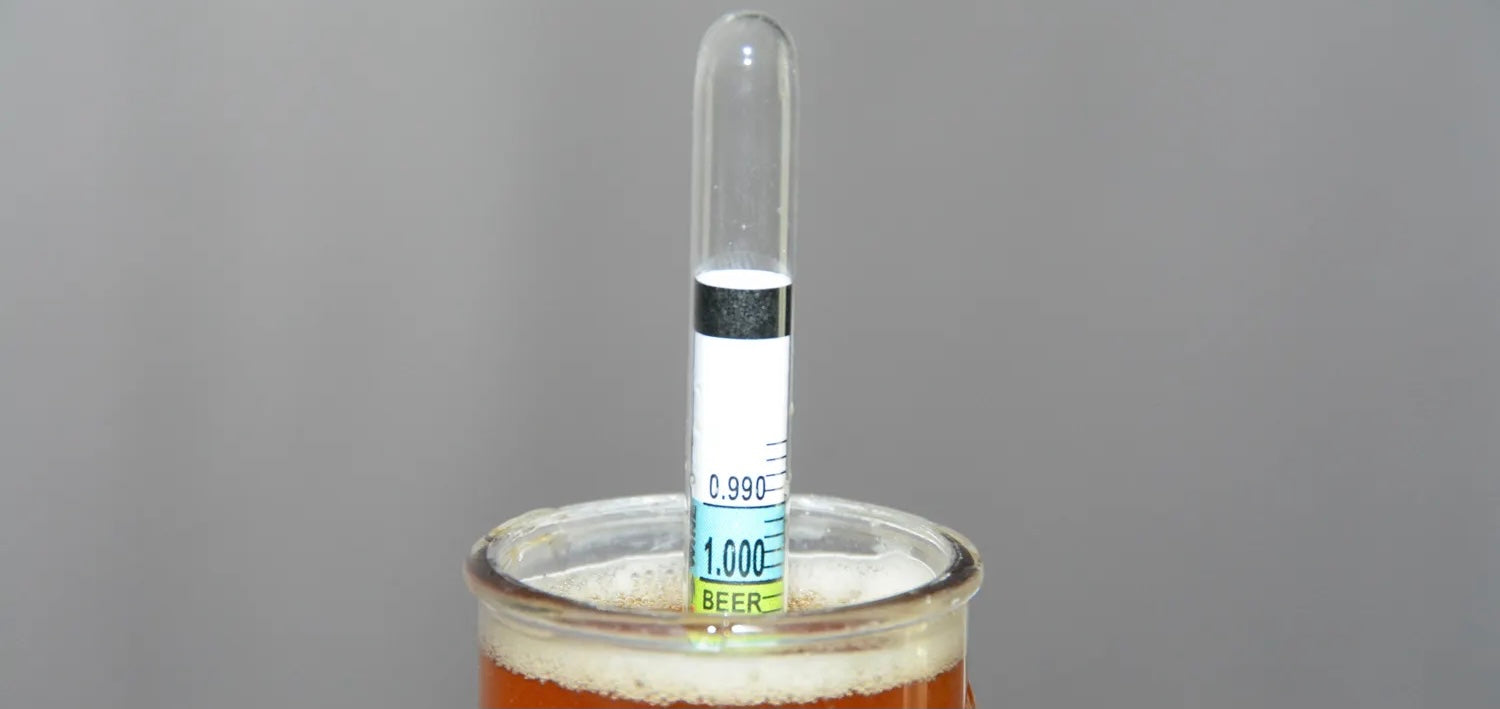Got a question you need answered? Get in touch!
Brewing questions? We can help, get in touch today!

A hydrometer is a brewers most useful tool. When we make a beer we are essentially combining different ingredients rich in flavours and other compounds that our yeast will ferment. Fermentation is a biological process in which we have very little control at a cellular level. Once our yeast is pitched it’s up to the yeast to perform all the necessary metabolic processes that turns our sweet flavoured wort into beer, wine, cider or other fermented beverage. Newer brewers assume that bubbling of the airlock is how we can measure fermentation. This is true to a point however measuring airlock activity is a secondary indicator of fermentation. To ensure our wort is fermenting taking a direct reading of yeast activity can be done using a hydrometer. This ensures we know that our fermentation is progressing nicely and allows us to double check fermentation has taken place to completion. It will also allow us to calculate how much alcohol our fermentation has produced.
When your using a hydrometer you are really just measuring the density of a liquid. The more dense the liquid the less your hydrometer will sink. Sugar is more dense than water, therefore, when we add more sugar to our wort our hydrometer will sink less. Ethanol (alcohol) however is less dense than water.
Our hydrometers have three seperate measurement scales. As home brewers we typically only use the specific gravity scale. This is notified by the reading 1.000. The specific gravity scale on most hydrometers will start at 0.980 and finish at 1.160. This can be seen in the diagram below. The next scale is the potential alcohol by volume scale. This is seen again on the diagram with the readings of 5%, 10%, 15% and 20%. This is not extremely accurate however it can be used to get an idea of how alcoholic your ferment could be. Keep in mind this is a theoretical maximum. The final scale on the hydrometer is a brix scale. This is normally used for winemakers; to avoid confusion ignore this scale when you’re getting started.
To take a hydrometer reading take a sample from your fermenter into a clean hydrometer sample jar, ensuring there is no trub or sediment in the sample as this can throw your hydrometer readings out. Drop your hydrometer into the sample of liquid and give it a spin to dislodge bubbles and ensure the hydrometer isn’t sticking to the sides of the sample jar. The hydrometer reading is then taken by looking at where the level of the sample liquid comes up to on your hydrometer scale.
When reading the sample be sure to read the upper meniscus, where the liquid has crawled up the sides of the hydrometer (pictured below). In this example the reading would be 1.020.

Since the change in concentration of sugar in your ferment tells us how much sugar has been fermented we can use this to calculate the corresponding amount of alcohol. This is done by taking the difference between the reading before fermentation has begun (original gravity) and the reading after fermentation has taken place and the gravity is no longer moving (final gravity. The difference is then multiplied by our constant of 131.25 to get our alcohol by volume as a percentage.
The equation is as follows for ease of use: (original gravity - final gravity) x 131.25 = alcohol by volume (%)
Hydrometers are calibrated to work at a certain temperature. This is normally 20 degrees celsius. Temperature affects density and can make your reading inaccurate. Try to ensure your temperature is the same as the calibration temperature before taking a reading.
Ensure your hydrometer is properly calibrated by taking a sample of distilled water. Distilled water should have a reading of 1.000. If your reading is 1.002 for example then the difference of .002 will be consistent across all hydrometer readings.
Ensure you read the top of the meniscus consistently.
Leave a comment